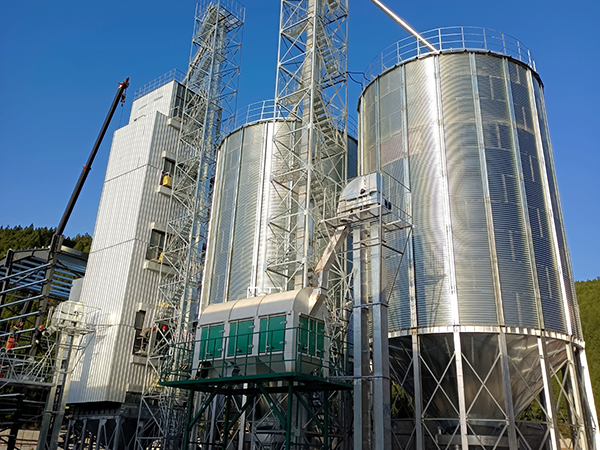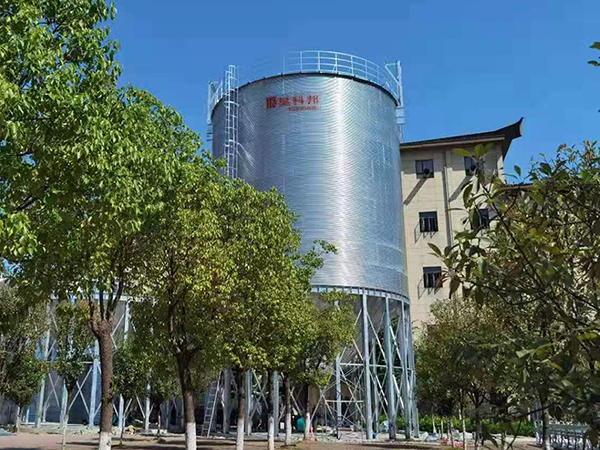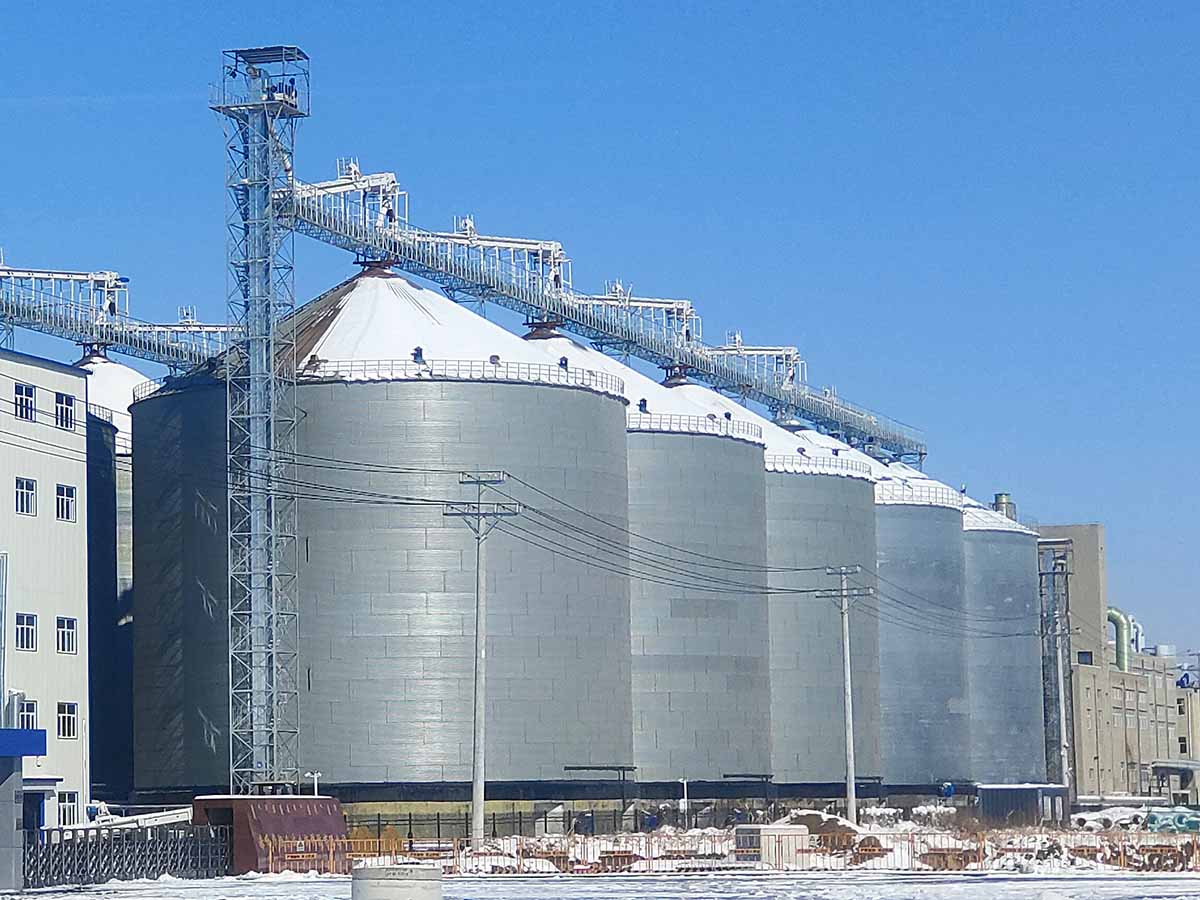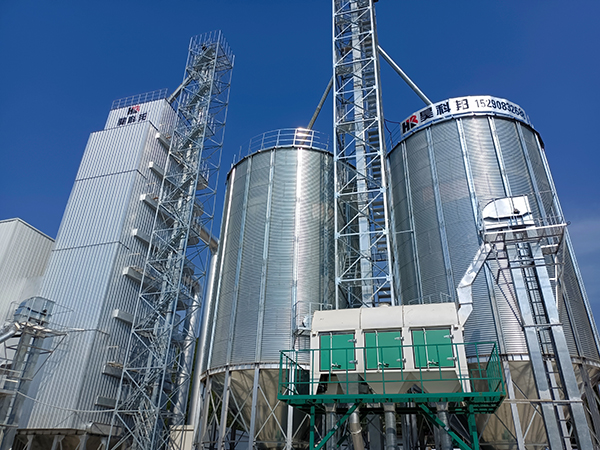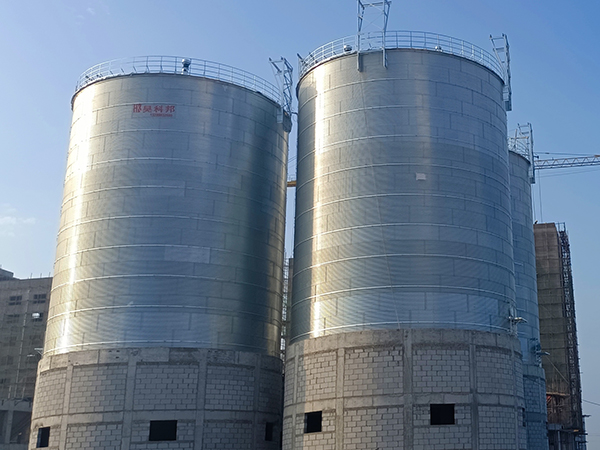How is a 1000-ton Capacity Maize Storage Silo Loaded?
The 1000-ton maize storage silo offers versatile storage for a range of agricultural products, with a detailed loading process and advanced auxiliary systems for efficiency and environmental protection. It ensures grain quality through climate control and automated monitoring, while specialized equipment reduces loss and maintains cleanliness.
- Barley grain bin company in Tanzania
- rice grain bin factory in Rwanda
- Paddy grain bin supplier in Guinea
- Wheat Cone-Bottom Silo Franchise in Thailand
- Wheat cone bottom silo procurement in Thailand
- Wholesale Wheat Cone-Bottom Silo in Malaysia
- Manufacturers of Wheat Cone-Bottom Silo in Malaysia
- Wheat Cone-Bottomed Silo Suppliers in Uganda
- Cone-Bottom Wheat Silo Sales in Uganda
- Wheat cone bottom silo price in Uganda
- Soybean meal grain bin sale in Guinea
- Corn grain bin price in Libya
A 1000-ton capacity maize storage silo serves not only for corn. This large-capacity silo is an ideal storage solution for a variety of agricultural products.
What Can a 1000-ton Maize Storage Silo Store?
Beyond corn, this silo is well-suited for storing common grains like wheat, rice, sorghum, and peanuts. Similar in volume and weight to corn, the silo’s design effectively meets the storage needs of these crops, maintaining their freshness and quality.
For oil-bearing crops like soybean meal and canola seeds, the 1000-ton capacity maize storage silo provides ample space and an optimal environment, preserving their oil content and nutritional value. These crops are sensitive to humidity and temperature during storage, and the silo’s climate control features ensure their long-term preservation.


Detailed Grain Loading Process
Grain crops, after harvest, are safely and efficiently stored in the silo through a series of refined operations. Here are the detailed steps:
Transportation and Weighing
Harvested grains are first transported to the storage facility by vehicle. Before entering the silo, grains are automatically weighed to ensure accuracy in weight and quantity.
Feeding and Preliminary Cleaning
Weighed grains are fed into the feeding port, the first step for grains entering the silo. Here, grains undergo preliminary cleaning to remove large impurities and lightweight materials.
Elevation and Deep Cleaning
After preliminary cleaning, grains are elevated to a cleaning screen for deeper processing. This step removes dust and fine impurities from the grains, ensuring cleanliness. Pulse dust collectors are typically used to absorb dust and reduce environmental impact.
Grain Entry into Silo
Thoroughly cleaned grains are elevated again and finally stored in the designated silo. Here, grains are properly preserved, awaiting further processing or market entry.
Storage and Management
Grain storage in the silo requires careful management, including control of temperature and humidity, ventilation, and moisture prevention to ensure grain quality during storage. Modern silos usually come with automated monitoring systems to track the status of the grains in real-time.


Auxiliary Systems of the 1000-ton Maize Storage Silo
The 1000-ton capacity maize storage silo is more than just a storage space; it’s equipped with a range of advanced auxiliary systems to improve work efficiency, ensure personnel safety, and protect the environment.
Diversified Loading and Unloading Systems
The silo features specialized loading and unloading processes and equipment for various transportation methods. These systems aim to reduce grain loss and energy consumption while ensuring efficient and safe operations.
Environmental Dust Suppression Measures
To reduce dust’s environmental impact, the silo is fitted with efficient dust suppression devices or measures during loading and unloading. These devices effectively control dust generated during grain handling, maintaining environmental cleanliness.
Efficient Conveying Equipment
Conveying equipment is designed to meet low breakage and easy maintenance requirements. Fixed conveyors feature fully enclosed designs to prevent grain contamination and loss, while mobile conveyors adopt corresponding sealed measures to ensure grain safety during transportation.
Ventilation and Dust Removal System
The silo is equipped with an advanced ventilation and dust removal system. This system effectively removes dust and includes explosion-proof, vibration reduction, and noise reduction facilities to ensure a safe and comfortable working environment.
Intelligent Temperature and Humidity Control
Grain condition monitoring and control systems monitor temperature and humidity in real-time within the silo and the grain pile. Smart ventilation systems automatically adjust temperature and humidity based on monitoring data, maintaining optimal storage conditions for grains.



